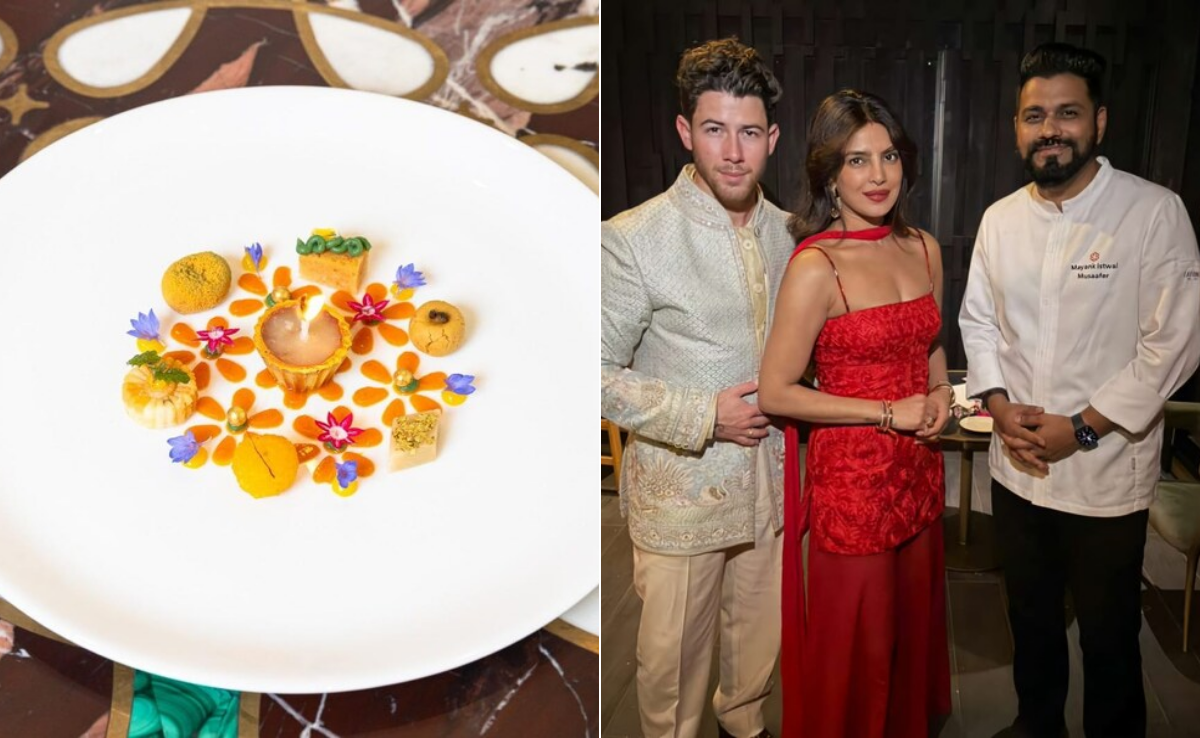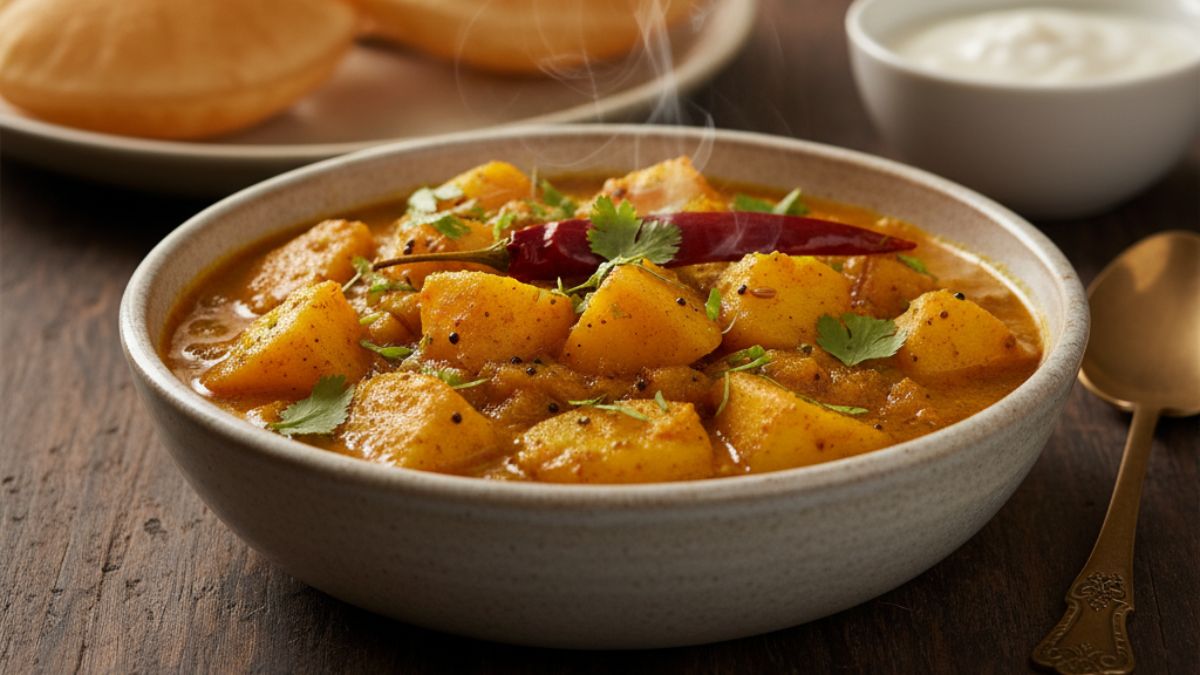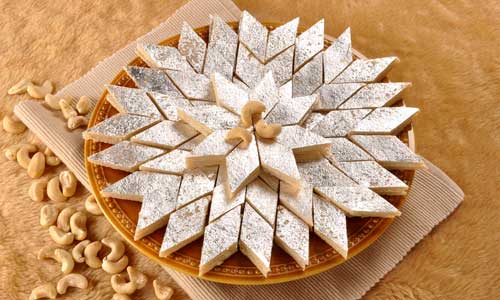There is something magnetic about stepping into an Indian sweet shop during the festive season. The glass counters gleam with trays of kaju katli, barfi, and laddoos - each dressed in silver so fine it almost floats on air. It looks like decoration, but it is much more. Vark carries centuries of history, medicine, faith, and craft within its shimmer. So why do Indians coat their sweets in gold and silver? The answer spans empires, rituals, and recipes - each layer as rich as the mithai beneath it.
Also Read: 5 Easy Morning Detox Teas That Can Support Weight Loss Naturally
What Exactly Is Vark and How It Is Made

Vark, or edible silver and gold foil, is produced by hammering small pieces of the precious metal into sheets so thin they can float in air.
Traditionally, artisans would:
- Place small pieces of silver between layers of parchment.
- Hammer them repeatedly to achieve the paper-thin texture.
- Cut and lift the delicate foils to use on sweets.
In older times, those parchment sheets were made using animal intestines - a process that created ethical concerns among Jain and vegetarian communities.
Today, most vark makers use synthetic or plant-based materials, preserving both the tradition and its values. Cities like Jaipur, Lucknow, and Varanasi continue to host skilled artisans who handcraft vark in small workshops, keeping this centuries-old craft alive.
Is Vark Safe to Eat?

Photo Credit: Getty
Modern food scientists confirm that edible silver and gold are non-toxic and pass through the body without being absorbed.
According to the Food Safety and Standards Authority of India (FSSAI):
- Edible silver and gold must be 99.9% pure.
- The foil should be free from heavy metals like nickel, lead, or copper.
- Only certified producers can legally manufacture and sell edible vark.
So yes, vark is safe when made properly, and that assurance is part of why it continues to be a trusted ingredient in Indian celebrations and rituals.
Now that we know what vark is and how it is made, let's explore why it became such an essential part of Indian sweets and why it still shimmers on every festive tray.
1. Because Royalty Turned Food into Spectacle
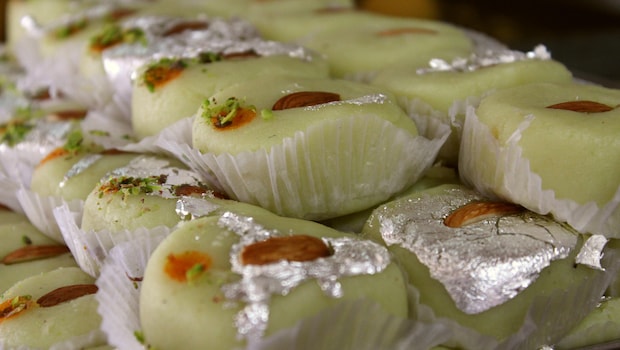
The story of vark begins in the royal kitchens of the Mughal emperors, where food was theatre. Persian influence introduced edible metal foils to India, but the Mughals elevated the idea - hammering gold and silver into ultra-thin sheets that transformed simple sweets into royal displays.
From Hyderabad to Lucknow, the gleam of vark became a marker of luxury. Over time, it trickled into common households, where families began adorning sweets to recreate a taste of royal indulgence.
"The silver-topped sweet became a marker of special occasions," say food historians, "a way for people to celebrate like royalty, even in their own homes."
This tradition of gilded food turned every festival into a performance - a small inheritance of Mughal grandeur.
Also Read: International Gin And Tonic Day 2025: 7 Desi Snacks To Pair With Your Drink
2. Because Ayurveda Believed in the Power of Precious Metals
Long before the Mughals, Ayurveda had already documented the use of gold and silver in food and medicine. These metals were thought to nourish the body and balance its internal energies.
In Ayurvedic philosophy:
- Silver was seen as cooling and antimicrobial, helping to reduce heat and inflammation.
- Gold symbolised strength and longevity, enhancing vitality and immunity.
- Swarna Bhasma (powdered gold) was prescribed to treat conditions from arthritis to nervous system disorders.
So the use of vark on sweets was not vanity - it was rooted in a belief that food should also heal.
3. Because It Symbolises Purity and Divine Blessings
Vark holds deep religious meaning in India, representing purity and prosperity. Sweets covered in silver or gold are often offered to gods as prasad during festivals like Diwali, Janmashtami, and Eid.
The silver sheen symbolises light and generosity, while gold is linked to Goddess Lakshmi and abundance.
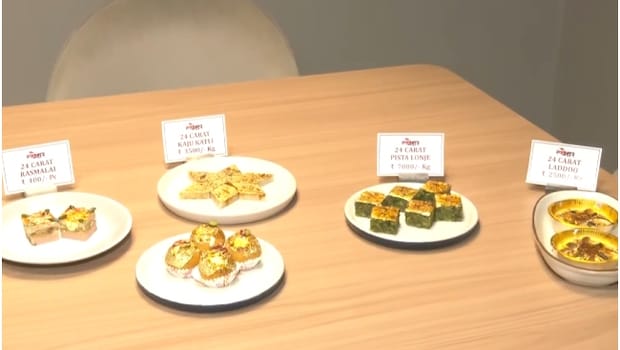
In Jain temples, the use of vark extends beyond food - it is also used to decorate idols, symbolising devotion and offering of something precious to the divine.
For devotees, adorning food with silver is not about taste - it is about intent. It transforms ordinary offerings into acts of reverence.
4. Because It Represents Status and Celebration
In modern India, vark continues to reflect prestige and social standing. Sweet shops price vark-covered mithai higher, signalling quality and care.
At weddings, festivals, and special occasions, gifting vark-coated sweets is a gesture of generosity and respect. The shimmer communicates something words do not - that the moment matters.
In today's kitchens, chefs have reinterpreted vark as a creative tool:
- It appears on fusion desserts like cheesecakes and tarts.
- It decorates cocktails in luxury bars.
- It remains central to mithai boxes exchanged during festivals.
Even as trends change, the foil still speaks the same language - one of prosperity and celebration.
Also Read: Feeling Bloated After Diwali? Lemon-Coconut Water Is The Simple Detox Your Body Craves
5. Because It Reflects India's Habit of Giving Meaning to Beauty

Behind every shimmering sweet lies a story that connects history, faith, and art. Vark represents more than embellishment - it is a mirror of India's impulse to infuse symbolism into daily life.
From Mughal opulence to temple rituals, Ayurveda to modern gifting, the reasons may differ, but the sentiment is constant: food here is never just food. It is memory, offering, and identity rolled into one silver leaf.
So the next time you peel a fleck of vark off your kaju katli, remember - you are tasting more than sugar. You are tasting centuries of tradition, layered in shimmer and meaning.

